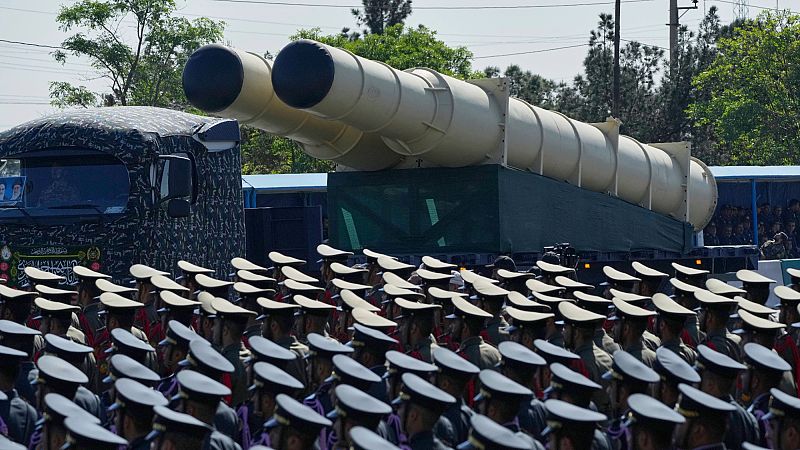
Iran's Islamic Revolutionary Guard Corps (IRGC) on Wednesday announced the use of a super-heavy Sejil missile as part of what it said was the 12th wave of strikes on Israel.
Despite its frequent appearance in the Tehran regime's military parades since it was reportedly brought into service in 2012, the Sejil missile's launch against Israel marks the first time one of its prized assets was used in direct confrontation.
Its real-world application also reveals a shift in gears in Tehran's deterrence calculations and response.
The Sejil, or "Brimstone", is classified as a surface-to-surface ballistic missile and was developed entirely inside Iran by the Ministry of Defence-run Aerospace Industries Organisation.
Although some reports claimed that Tehran used similar Chinese-made missiles as a technical basis for the Sejil, its size and other features suggest it is entirely designed and produced in Iran.
The missile, developed to replace the Shabab class of rockets in service since the late 1980s, has a range of about 2,000 kilometres and uses solid fuel as propellant, making it quicker to launch compared to liquid-fueled equivalents.
The Sejil is manoeuvrable in all stages of flight, making it difficult to intercept by conventional air defence systems. Although details on its speed are unclear, Tehran reportedly stated that it is capable of reaching Tel Aviv in approximately seven minutes if launched from central Iran.
In terms of technical specifications, reports say it measures 25 metres in length, 1.25 metres in diameter, and weighs approximately 2.3 metric tonnes. It can carry warheads weighing up to 700 kilograms and is believed to be capable of carrying nuclear warheads.
The Sejil first appeared in a field test in 2008, before its improved version, the Sejil-2, was developed in 2009. In this version, the warhead design was modified, and guidance wings were added to enhance accuracy.
However, some reports claim that Sejil-2 might not be a separate model, but rather a test name for the same rocket. Yet footage from 2021 military exercises featuring the Sejil shows updates to earlier missiles of the same model have been made, notably to its jet vanes.
Furthermore, rumours of another updated model, the Sejil-3, say that a more modern version was developed with a maximum range of 4,000 kilometres, meaning that in theory it could almost reach Brussels from Tehran.
Israeli authorities said on Thursday that the Sejil was successfully intercepted, with debris causing damage to a vehicle.







